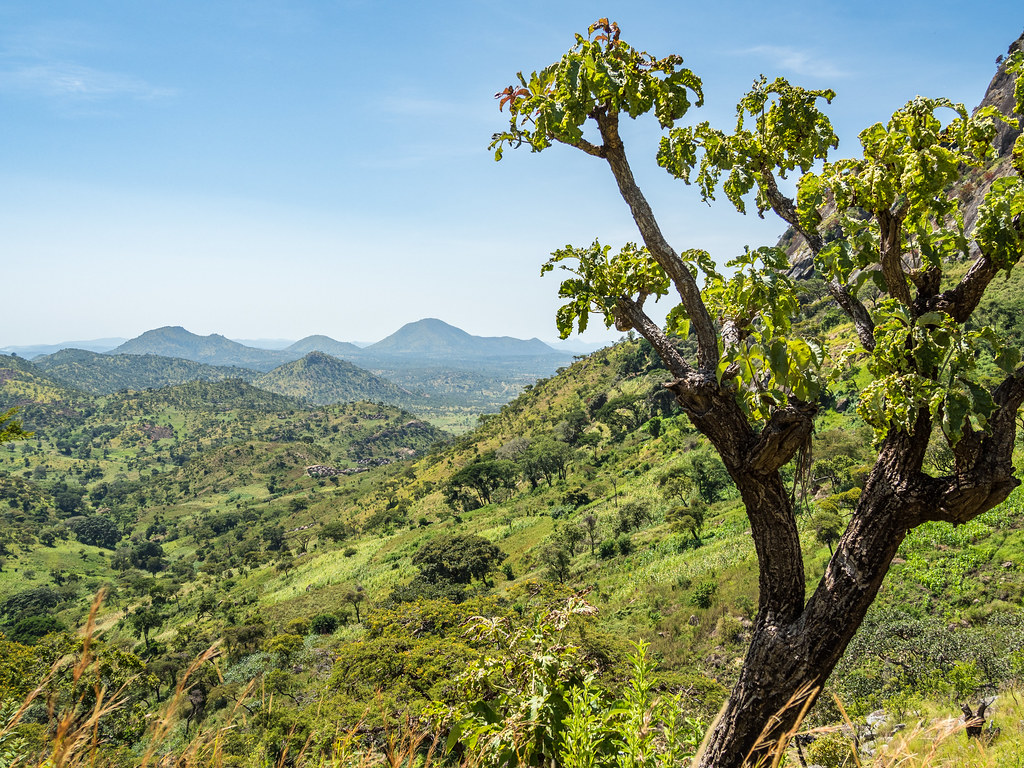
Mount Morungole
Mount Morungole
Mount Morungole, at an elevation of 2,750 meters, is the highest peak in Kidepo Valley National Park. The Morungole Mountain range, situated northeast of Apoka, delineates significant portions of the southern limits of Kidepo Valley National Park. Although the mountain range may not be considered towering relative to other Ugandan mountains, its elevation from the Karamoja lowlands renders it a formidable presence. A significant portion of the mountain range consists of verdant montane forest, notably differing in vegetation from that of Kidepo Valley National Park.
The significant altitudinal variation of Mount Morungole substantially influences the climatic conditions and drainage system of Kidepo Valley National Park inside the Karamoja region. This ultimately impacts wildlife movements, behaviors, and the associated tourism activities and attractions in Kidepo Valley National Park.
Mount Morungole serves as the origin of the Kidepo and Narus Rivers. During the rainy season, runoff from various streams in the mountain ranges inundates the valleys. Vegetation thrives, wildlife species have ample sustenance, and life at Kidepo Valley National Park is vibrant. Travelers on a tour of Kidepo Valley National Park in Uganda frequently see a diverse array of wildlife species. During the dry season, runoff collection from the Morungole Mountains diminishes, resulting in decreased water levels in the rivers; certain wildlife species migrate further into the wilderness, while visitors cover extensive regions to find their concealed habitats.
 Tourists visiting Kidepo Valley National Park in Uganda immediately identify the landmark Mount Morungole, since it consistently serves as a point of reference. To the newcomer, Mount Morungole presents an impression of a relaxed environment where life appears to exist in its primordial state. The alpine forest cover appears paradoxically contrasting with the semi-arid climatic conditions prevalent in the remaining plains of Kidepo Valley National Park during the dry season.
Tourists visiting Kidepo Valley National Park in Uganda immediately identify the landmark Mount Morungole, since it consistently serves as a point of reference. To the newcomer, Mount Morungole presents an impression of a relaxed environment where life appears to exist in its primordial state. The alpine forest cover appears paradoxically contrasting with the semi-arid climatic conditions prevalent in the remaining plains of Kidepo Valley National Park during the dry season.
This stimulates curiosity among eager adventurers, igniting a sense of wilderness adrenaline and encouraging exploration to uncover hidden treasures. For the adventurer seeking an authentic African experience, where communities coexist with animals, Mount Morungole is an exemplary location to shoot magazine-quality images that validate your journey. The 8-hour trek to and from Mount Morungole immerses adventurers in a serene and less frequented environment, yielding distinctive emotions and sensations that endure in the adventurer’s memory.
Mount Morungole serves as the ancient homeland of the distinctive Ik community in Africa. The Ik are the smallest ethnic group in Uganda, characterized by a distinctive and traditional lifestyle deeply rooted in African culture. The Ik seldom venture beyond their original territories, and when they do, it is exclusively inside the confines of the Karamoja region. The Ik take immense pride in their culture and lifestyle, to the extent that even those few who travel disdain and refuse to conform to external trends. Their daily existence is characterized by traditional African customs, mostly unaltered by other influences, and they take pride in their heritage. Numerous people on a Uganda safari to Kidepo Valley National Park engage in game viewing and visit the Ik community to obtain possibly the most exceptional lifetime experiences in Uganda.
The Mount Morungole range is situated at a higher height than the surrounding Karamoja region, resulting in significantly colder temperatures compared to the lowlands. The highland vegetation exerts a cooling influence and offers shelter for creatures from the intense sunlight. Numerous wildlife species, particularly birds, monkeys, and smaller solitary mammals, hibernate in the Morungole Mountain range to reproduce. When seeking distinctive locations to observe rare wildlife species in Kidepo Valley National Park, the Morungole Mountain range should invariably come to the traveler’s attention.


